This blog was written by Dr Helen Longlands and originally published on the Centre for Education and International Development (CEID), UCL Institute of Education blog on 18 May 2021, ahead of an event to be held on 27 May (see more information at the bottom of the page).
Gender equality in education is a matter of social justice, concerned with rights, opportunities and freedoms. Gender equality in education is crucial for sustainable development, for peaceful societies and for individual wellbeing. At local, national and global levels, gender equality in education remains a priority area for governments, civil society and multilateral organisations. The United Nation’s Sustainable Development Goals and 2020-2030 Decade of Action commit the global community to achieving quality education (Goal 4) and gender equality (Goal 5) by 2030. The G7 Foreign and Development Ministers, meeting this summer in the UK, have made fresh commitments to supporting gender equality and girls’ education, which build on those they made in 2018 and 2019. Yet fulfilling these agendas and promises not only depends on galvanising sufficient support and resourcing but also on developing sufficient means of measuring and evaluating progress.
The urgency for gender equality in education has been compounded by the profound impacts of the Covid-19 pandemic, which has exposed, exacerbated and created new forms of intersecting inequalities and injustices associated with gender and education. School closures have resulted in millions more children out of school, many of whom may never return, particularly the poorest and most marginalised girls. While UNESCO estimates that over 11 million girls are at risk of not going back to school once the worst of the pandemic is over, the Malala Fund indicates this figure could be as high as 20 million. Cases of violence against women and children have also risen during the pandemic. A recent review by the Centre for Global Development of studies on low and middle income countries presents evidence of an increase in incidences of various forms of gender-based violence, including intimate partner violence, harassment, and violence against children. Assessment by UN Women connects this rise in violence to Covid-19 measures and consequences, including the closures of schools, suspension of community support systems, and increasing rates of unemployment and alcohol abuse. Meanwhile, heavier burdens of caregiving responsibilities during the pandemic, as well as reduced access to sexual and reproductive health knowledge and resources, limited availability of technology to support learning, and low levels of digital technology skills have gendered dimensions and risk further widening existing gender inequalities and power imbalances associated with education.
The effects of the pandemic add to the challenges of achieving gender equality in education and to the complexities involved in evaluating progress towards it. As we continue to develop and extend response, recovery and sustainability initiatives, to build back better, it is important to have explicit and honest discussions about gender and other intersecting inequalities in education. And it is vital to ensure we have robust and reliable ways of identifying, evaluating and holding people to account for these inequalities and their underlying causes in order to build more just and resilient societies. How we do this, however, is not straightforward and presents many conceptual and practical challenges around understanding, accessing and utilising the information, resources and approaches we need. What do we mean when we talk about gender equality in education, how can we measure progress towards it, and how will we know when we achieve it?
 The Accountability for Gender Equality in Education (AGEE) project, co-ordinated from the Centre for International Development (CEID) at UCL Institute for Education, has been engaging with these complexities to develop an innovative indicator framework for documenting, monitoring and evaluating gender inequalities and social policies connected with education. Our work supports the UN’s Sustainable Development Goals (specifically SDG4 to ensure inclusive and quality education and promote lifelong learning opportunities for all) and government initiatives on gender equality in education. The AGEE project is an international research collaboration between academics in the UK, Malawi and South Africa, with an associated global ‘community of practice’ that brings together a wide range of experts from the fields of education and gender equality, including UNESCO and the UNESCO GEM Report, UNGEI, Global Partnership for Education , Education International, FAWE, Equal Education, South Africa and the Civil Society Education Coalition, Malawi. The first phase of the project (2018-2021) has been funded by the ESRC-FCDO Raising Learning Outcomes programme.
The Accountability for Gender Equality in Education (AGEE) project, co-ordinated from the Centre for International Development (CEID) at UCL Institute for Education, has been engaging with these complexities to develop an innovative indicator framework for documenting, monitoring and evaluating gender inequalities and social policies connected with education. Our work supports the UN’s Sustainable Development Goals (specifically SDG4 to ensure inclusive and quality education and promote lifelong learning opportunities for all) and government initiatives on gender equality in education. The AGEE project is an international research collaboration between academics in the UK, Malawi and South Africa, with an associated global ‘community of practice’ that brings together a wide range of experts from the fields of education and gender equality, including UNESCO and the UNESCO GEM Report, UNGEI, Global Partnership for Education , Education International, FAWE, Equal Education, South Africa and the Civil Society Education Coalition, Malawi. The first phase of the project (2018-2021) has been funded by the ESRC-FCDO Raising Learning Outcomes programme.
The AGEE project’s theoretical and methodological approach draws on key ideas from the capability approach, including the importance of public debate and democratic deliberation, recognition of how inequalities, opportunities and freedoms connect to the complexities of the physical, political and social environment as well as the distribution of resources, and a focus on both the interpersonal and the individual. We see these ideas as crucial components to identifying, understanding and meaningfully measuring gender inequalities and equality in education in diverse local contexts in ways that capture both unique and more general issues as well as longstanding and emerging concerns.
Thus our aim is to help refocus the policy attention beyond gender parity in education to a more substantive understanding and recognition of what gender equality in education could or should entail within and across different contexts, and provide clarity on the data needed for public policy. Gender parity comprises a simple ratio of girls to boys or women to men in a given aspect of education, such as enrolment, participation, attainment or teacher deployment. Gender parity is a clear and uncomplicated measure, which makes it appealing to policymakers and practitioners, and has led to its widespread use as a measure of gender equality in education in national and global development frameworks. This is seen in many of the targets for SDG4 on education and previously in the Millennium Development Goals (MDGs) (2000-2015). However, gender parity is also an inadequate measure on its own because it is unable to capture more complex forms of gender inequality, the conditions and practices that underpin them, the ways in which they intersect with other forms of inequality and injustice, and the short and longer term consequences for individuals and societies. While it is important to ensure all children can access, attend and complete school, which are all issues that gender parity can monitor, it cannot measure issues such as girls’ or boys’ lived experiences of gender discrimination or violence in and around school, or gender inequalities associated with curricula, learning materials, pedagogic approaches or work practices.
Ongoing consultations and debates with stakeholders at community, national and international level are thus key components of AGEE’s research approach. Through them, we have sought to develop a deeper understanding of local, national and global forms of gender inequality and injustice in education and the ways these interconnect. We have scrutinised whether or not existing measurement techniques document this in order to enhance work on gender equality in policy and practice. Over the past few years, through workshops, interviews, technical meetings, academic papers, conference presentations, seminars and teaching, we have engaged in critical participatory dialogue with a wide range of key national and international stakeholders in education and gender, including representatives from governments, national statistics offices, civil society, international organisations, academics and students. This dialogue has explored and interrogated understandings of and debates around gender, accountability, measurement and data, and collated information on the range of factors, relationships, conditions and available data associated with gender equality in education.
Through this in-depth participatory process, we have developed, adapted and refined the AGEE Framework (see main image at the top of this page). The Framework is designed to be robust and comprehensive as well as flexible and adaptable, in order both to capture complex, enduring and widespread forms of inequalities, and to be responsive to local characteristics and changing conditions, including forms of crisis. The AGEE Framework comprises six interconnected domains for monitoring and evaluating gender equality in education: Resources; Values; Opportunities; Participation in Education; Knowledge, Understanding and Skills; and Outcomes. And we have identified a number of indicators and related existing or potential data sources to populate these domains.
If you would like to learn more about the AGEE project and engage with our work to support gender equality in education, please visit our website: www.gendereddata.org, where you can find more information about our research and the AGEE Framework, and join our community of practice.
Join the special event on May 27 2021 where the AGEE Framework will be presented in detail: The politics of measuring gender equality in education: Perspectives for the G7
Acknowledgements:
Members of the AGEE project team: Elaine Unterhalter (UCL and AGEE PI), Rosie Peppin Vaughan (UCL), Relebohile Moletsane (UKZN), Esme Kadzamira (University of Malawi) and Catherine Jere (UEA).

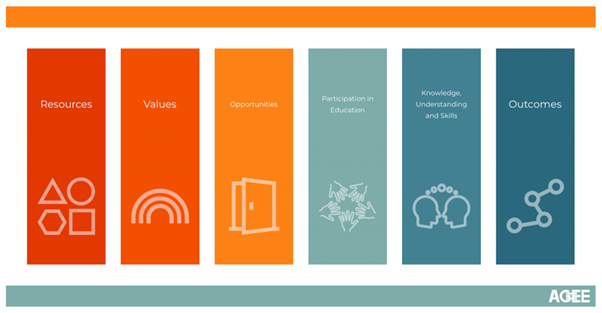
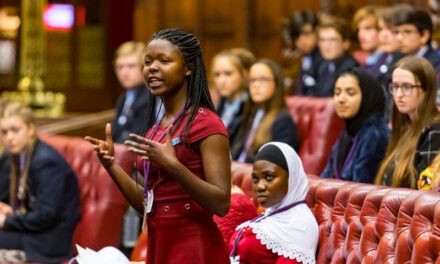
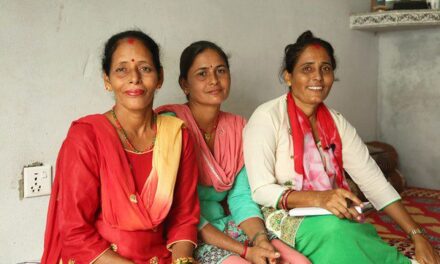
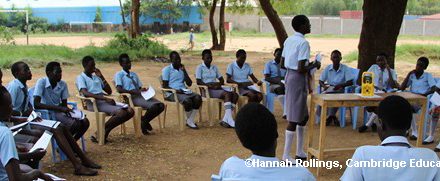
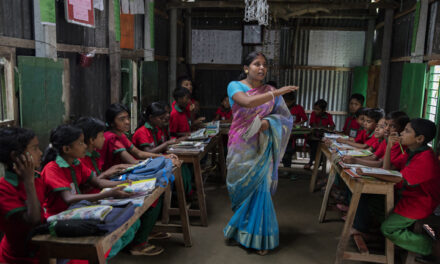
The information you’ve shared in this guide is remarkable. Thanks for sharing such quality information.